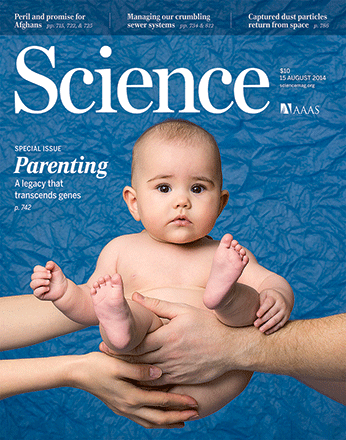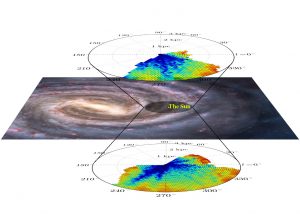
An international team of astronomers, including UCLan’s Prof Brad Gibson, has produced new maps of the material between the stars in the Milky Way that should move scientists closer to cracking a stardust puzzle that has vexed them for nearly a century.
The maps and an accompanying journal article appear in the Aug. 15, 2014 issue of the journal Science. The researchers say their work demonstrates a new way of uncovering the location and eventually the composition of the interstellar medium, which refers to the material found in the vast expanse between star systems within a galaxy.
This material, including dust and gas composed of atoms and molecules are left behind when a star dies. They also become the building blocks of new stars and planets. How and why stars form where they do, with the sizes and mass that they possess, remains something of a mystery though. “This work provides surprising clues about the interstellar medium out of which stars form.”, says Gibson, one of the Builders of the experiment used in the new study.
Analysing rainbow-coloured bands of starlight that have passed through space gives astronomers important information about the makeup of the space materials that the light has encountered. As early as 1922 though, photographs yielded peculiar dark lines indicating ‘missing’ starlight and that something in the interstellar medium between Earth and the star was absorbing the light. These features were called diffuse interstellar bands (or DIBs).
Since then, scientists have identified more than 400 of these DIBs, but the material that is causing these bands to appear and their precise location in the Milky Way have remained a mystery. Researchers have speculated that the absorption of starlight that creates these dark bands points to the presence of unusually large complex molecules, but the proof has remained elusive. The nature of this puzzling material is important to astronomers because of the clues it could give about the physical conditions and chemistry of these regions between stars, critical components in theories of how stars and galaxies are formed.
The new study published in Science is the culmination of 10 years of data collection by 23 scientists from 10 countries, as part of RAVE – the Radial Velocity Experiment. Three- dimensional maps of the distribution of the DIBs in the Milky Way were constructed using 500,000 stars pointed in many different directions and analysing the dark mysterious bands seen in each of these directions.

The resulting maps show – for the first time – the intriguing result that the complex molecules thought to be responsible for the DIBs are distributed differently to another known component of the interstellar medium – the solid particles known as dust. Why this is the case remains a mystery.
Future studies can use the techniques outlined in the new paper to assemble other maps that should further solve the mysteries surrounding where DIBs are located, what exact materials cause them, and why they appear to be distributed differently to the Milky Way’s dust. “To figure out what something is, you first have to figure out where it is,” co- author Rosemary Wyse said, “and that’s what this paper does. Larger surveys will provide more details in the future. This paper has demonstrated how to do that.”
